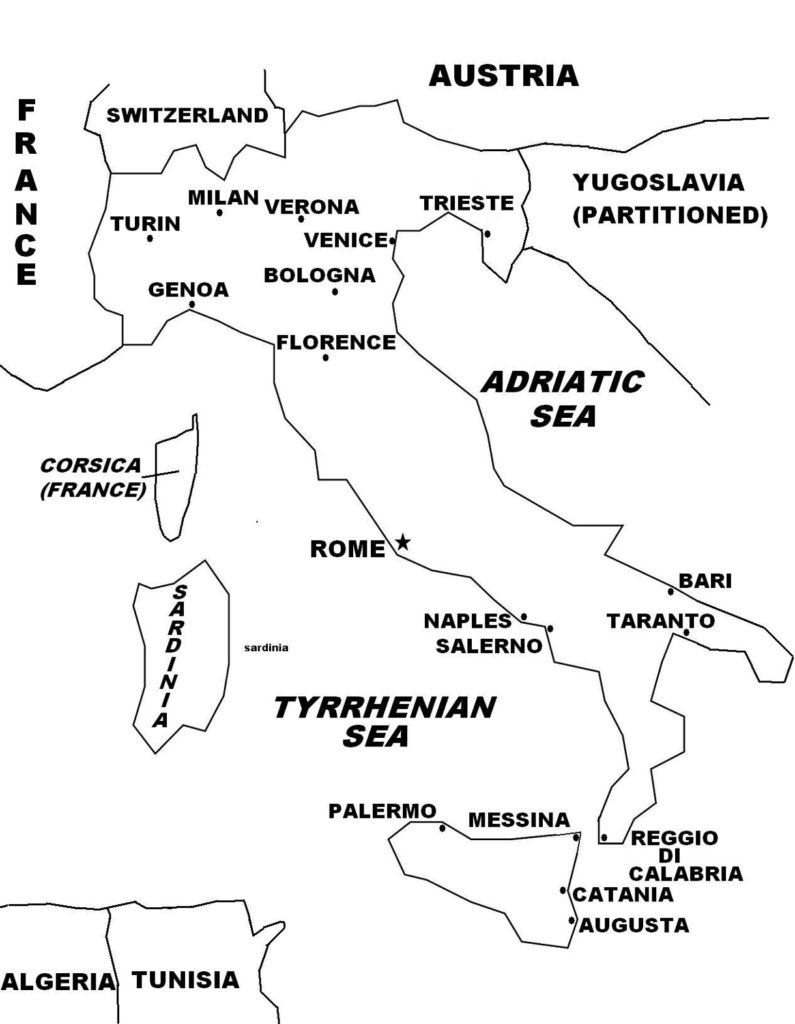On September 10, 1943 and continuing for several days, German forces seized control of Italy after the Italian government announced that it had signed the Armistice of Cassibile with the Allied Powers. The Germans disarmed the Italian troops and took over the Italian zones of occupation in the Balkans and southern France. In most cases, Italian units were unable to resist in the midst of chaos during the disarming process. A few units managed to resist as in the Greek island of Cephalonia, where the Italians surrendered after running out of ammunition, and in the Italian capital Rome, where a hastily mounted haphazard defense was easily overcome. In Sardinia, Corsica, Calabria, and few other areas, the Italians successfully resisted until the arrival of the Allies. Other Italian units joined the local resistance movement.

(Taken from Italian Campaign – Wars of the 20th Century – World War II in Europe)
The invasion of Sicily also forced Germany to withdraw some units in Russia, particularly from the ongoing Battle of Kursk (where the German offensive was already faltering), to confront the new threat. Thereafter, the Germans lost the initiative in the Eastern Front and would permanently be on the defensive, a situation they also would face in the Allied campaign in Italy.
General Badoglio declared his continued alliance with Germany, but secretly opened peace talks with the Allies. Negotiations lasted two months, and on September 8, the Italian government announced an agreement with the Allies, called the Armistice of Cassibile, where Italy surrendered to the Allies. Fearing German reprisal, King Victor Emmanuel II, General Badoglio, and other leaders fled from Rome and set up headquarters in Allied-controlled southern Italy. There, on October 13, 1943, the Badoglio government declared war on Germany.
The Germans, which had increased their military presence in Italy since Mussolini’s ouster a few months earlier, and had gained intelligence information that the new government was seeking a separate peace with the Allies, now sprung into action and disarmed Italian forces in Italy, France, and the Balkan regions, and seized important military and public infrastructures across Italy. Italian military units were unaware of the armistice, and thus were caught off-guard and generally failed to offer resistance to the German take-over. Then on September 12, 1943, Mussolini was rescued from captivity by German commandos in a daring raid, and two weeks later, was installed by Hitler as head of the newly formed fascist state, the Italian Social Republic, covering Axis-controlled northern and central Italy. Two rival governments now laid claim to Italy, and the former Italian Armed Forces became divided, fighting while aligned with one or the other side.
Meanwhile, in September 1943, the Allies were ready to invade mainland Italy after their capture of Sicily one month earlier. On September 3, 1943, the same day that the armistice was signed, British 8th Army units in Sicily crossed the Gulf of Messina and landed at Reggio di Calabria, at the southwestern tip, or “toe” of Italy (Figure 36). The landing was unopposed, as the Germans had already retreated north while the Italian coastal batteries were overwhelmed by Allied naval gunfire. Then on September 9, 1943, one day after the armistice was announced, the British made another amphibious landing at Taranto in southeast Italy, which also was unopposed. The Allies aimed the two landings to divert the Germans from the main landing at Salerno, some 200 miles further north off the western coast, which also was carried out on September 9, 1943 by the newly formed U.S. 5th Army (comprising one American and two British divisions). The Allies also anticipated that the Taranto-Salerno landings would exploit the confusion among the Germans by the sudden announcement of the armistice.
However, by the time of the armistice, the Germans were firmly established in Italy. And although many German units were diverted to disarm the Italian Army, a substantial force remained to guard against the expected Allied invasion. Furthermore, General Albert Kesselring, commander of German forces in southern Italy, correctly surmised that the main Allied landing would not be made in southernmost Italy, but rather in the vicinity of Salerno, Naples, or even Rome, where he concentrated German forces from their withdrawal from the south.
